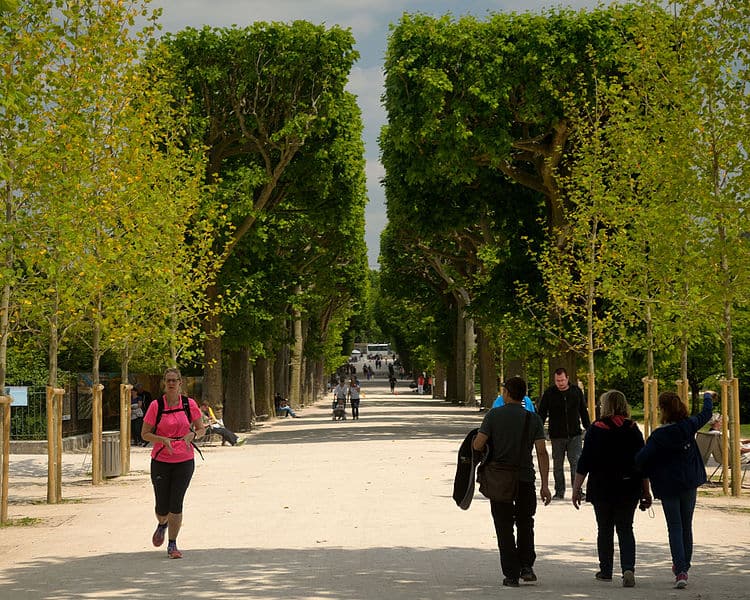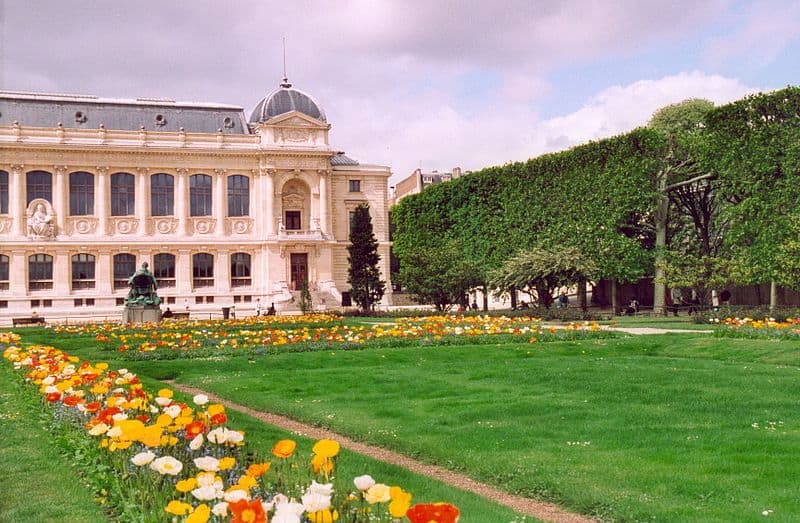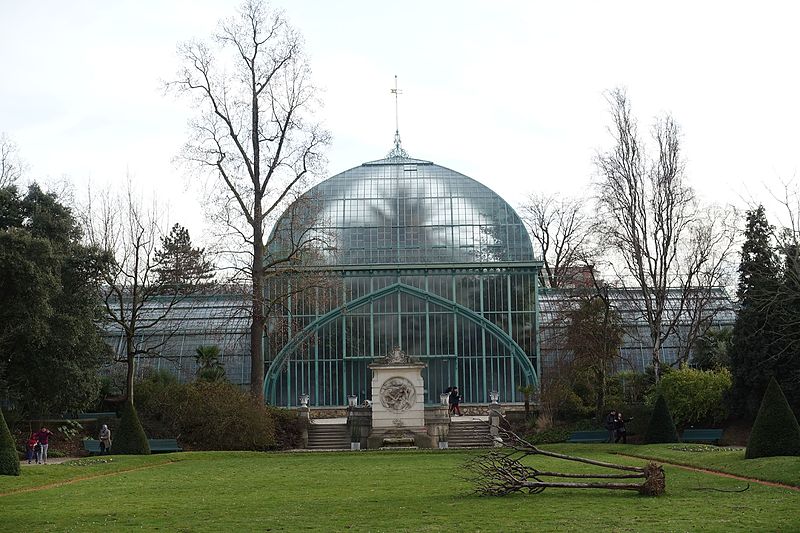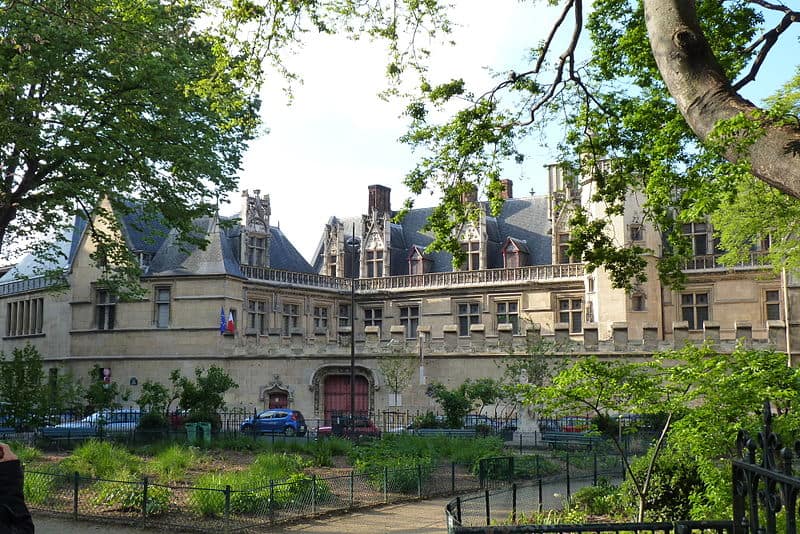Why You Need to Visit Paris’ Botanical Garden
Beautiful gardens are not hard to come by in Paris. Particularly in the spring and summer time, the greenery of the various parks and gardens can be spotted with ease over any angle of the city skyline.
Finding opportunity to bask under the Parisian sun is quite simple. The Tuileries Gardens and Jardin du Luxembourg are a short walk from most of the main tourist attractions in the city centre .
Then you’ve got the better known parks like the Champ-de-Mars, where a day on the green grass seems like a fabulous idea until you realize that three thousand other people all had the exact same thought.

Paris’ Botanical Garden – by Moonik – Wikimedia Commons
Sometimes it’s nice to explore parts of Paris that are less frequented by everyone else. In my search for somewhere in the great outdoors where I could find solace from the chaos of the city I came to find my now favorite haven in all of Paris.
Paris’ Botanical Garden is located in the 5th arrondissement right where the district meets the Seine river. It is an unexpected, yet perfect, location for such a natural wonder. The garden is just off the centre of Paris, and is as easily accessible as many of the other pieces of greenery we are so quick to flock to.
Most people are astounded when they learn the true history of the space and how the Botanical Garden came to be. Furthermore, they are also taken aback when they learn of the array of public attractions that the garden holds today.

Official Botanical Garden Map – by Jardin des Plantes – Sourced from their website
I’ll be breaking down a few of the most notable ones for you, so you can better plan your visit. Paris’ Botanical Garden takes time to explore — its best to go in with a sound idea of what you’d like out of the day and exactly what you want to see.
But first, a brief history…
The History of Paris’ Botanical Garden
First things first I should mention that Paris’ Botanical Garden is over 375 years old. Yes, a garden older than many of the monuments that make up the rest of Paris’ history.
The history goes that the garden was originally an land on which to grow medical herbs under the watchful eye of the official doctor to the King of France — whoever he was at the time.

Paris’ Botanical Garden – by Tom Hilton – Wikimedia Commons
The garden served exactly this purpose from its opening in 1640 right up until 1718. The land was home to over 1800 species of herbs, all grown with sole intent of keeping the reigning king in tip top health.
As commemoration to these years, the grounds are today the location of the Paris School of Botany — located almost in the centre of the Botanical Garden. Poetic justice, if you will, for the original land of herbs in French history.
In 1793, after the Revolution, the garden became the Botanical Garden that it is today. It was almost doubled in size and more public monuments were added to it. In 1833 the garden saw the addition of its first greenhouse.

Paris’ Botanical Garden – by besopha – Wikimedia Commons
The most recent attraction to the land would be the rose garden that was added in 1931.
Today the Botanical Garden of Paris contains over 4000 species of plants and trees collected from all over the planet. I love strolling through the grounds and reading each of the plaques naming each one.
Museum of Natural History in Paris’ Botanical Garden
The Museum of Natural History was the first addition to the Botanical Garden during the 1700s after the Revolution. It is one of the largest collections of natural history in the world.
Amongst its collections the museum boasts an impressive 65 million minerals, fossils and natural specimens. It is also the largest herbarium in the world with over 11 million species on record.

Gallery of Evolution at the Museum – by Patrick GIRAUD – Wikimedia Commons
Most people aren’t aware that the Botanical Garden site is not the only unit of the Museum of Natural History. There are three more locations situated around Paris and fourteen in total in all of France.
It is a huge premises, with a lot to do and see. The collection of taxonomy is a highlight for children, along with the bones and skeleton collections— so don’t hesitate to take your family along to explore.

Museum of Natural History – by Jardin des Plantes – Sourced from their website
Upon arrival at the museum take a look at the site map and isolate the wings that you’d most like to see. The size of the property makes it hard to do everything in one day, so start with the sections that interest you most first.
The great things about the Museum of Natural History in Paris is that they sell separate entry tickets to each individual section, so no need to pay full admission if you are only there to see something specific.
The Menagerie in Paris’ Botanical Garden
The Menagerie is the second oldest zoo in the world; more famously known for being the home of the first giraffe to ever set foot in France.

The Ménagerie – by Guilhem Vellut – Wikimedia Commons
The zoo is unlike most others, as the animals are housed indoors as opposed to outside. The buildings from the Revolution days are still standing and form the sanctuaries in which the live animals are kept.
This makes the zoo particularly enjoyable to visit even on the hottest and coldest days.
The Menagerie holds a collection of over 2000 animals, with 200 different species represented. A third of the animals that live here are officially part of the endangered species list.

Endangered animals at The Ménagerie- by Jardin des Plantes – Sourced from their website
Many people like to take a free guided walking tour of the surrounding district and end their walk at this location to see some wildlife before calling it a day.
Amongst the animal kingdom we find many snakes, crocodiles, kangaroos, deer and even a beautiful snow leopard. My personal favorite are the fabulous pink flamingos that seem so perfectly placed against the green of the garden.
What’s great about this zoo is that it works directly with the Museum of Natural History on the properly to provide space for doctors and zoologists from around the world to come together in hopes of bettering the lives of the animal kingdom as we know it.

Flamingos at The Ménagerie – by Guilhem Vellut – Wikimedia Commons
Extensive research and laboratory work takes place in the Parisian Botanical Garden; paving way for great revelations in the worlds of the living species with whom we share this Earth.
Again, a great place to visit with children or just by yourself if you need somewhere to let your brain unwind for a few hours.
Les Grandes Serres in Paris’ Botanical Garden
The greenhouses of Paris’ Botanical Garden are official historical monuments dubbed so by the city of Paris. They are great metal structures that were first built in the 1800s — the original frameworks still stand in the gardens today, though most of them needed slight renovations over the years.

Greenhouse at Paris’ Botanical Garden- by Jardin des Plantes – Sourced from their website
From an architectural standpoint the greenhouses are incredible. Their size and stature is very hard to ignore — strong, just like the plant life that they hold within.
The greenhouses were first built into the Royal Garden back when one of the kings demanded orange trees to be added to the grounds. Orange trees are considered fragile plants, so in order to protect them from the harsh frost of the Parisian winter, greenhouses needed to be put in place.
Upon entry, the first greenhouse you’ll explore will likely be the rainforest one. This house has an impressive simulated eco system that simulates the tropical environments of the African and American rainforests.

Palamarium Greenhouse – by Guilhem Vellut – Wikimedia Commons
The desert greenhouse takes things up a notch to a much more heated environment. It is here you will find plant species from the drier parts of the world. Australia, Mexico and the Sahara plains are represented within this particular space.
Many of the plants within the Paris Botanical Garden greenhouses are today on the endangered plant life list; so these facilities form important parts of preservation initiatives by botanists around the world.
The greenhouses are not just a place to go to view beautiful plants for a few hours; visitors also have the opportunity to learn the history of each and the roles that they play in terms of the greater ecosystem.

Palamarium Greenhouse – by Guilhem Vellut – Wikimedia Commons
The greenhouse facilities at Paris’ Botanical Garden are managed just like any other museum. Their facilities flow well and the content is curated and informative. Of course, if you simply just wanted to stare at some greenery for a while you can do that too!
Note that the greenhouses are open daily aside from Tuesdays!
Admission: €6
The Labyrinth in Paris’ Botanical Garden
The Labyrinth of Paris’ Botanical Gardens was added in 1739, the first time the gardens were expanded for inclusivity.
It should be noted that this attraction is not actually a labyrinth at all, but rather a well constructed maze. In the center sits the summer house pavilion.
The summer house pavilion is the oldest metallic building in the world. It is over one hundred years older than the Eiffel Tower.

Plant life at Paris’ Botanical Garden – by Guilhem Vellut – Wikimedia Commons
The pavilion is purely for viewing pleasure. The maze itself is nice to do during a visit to the Botanical Garden. It is built on a slight incline, with the pavilion right at the top. Once you get up there you’ll enjoy the beautiful views over the surrounding arrondissements.
The Labyrinth is completely open to the public and free to use.
Hôtel à Abeilles in Paris’ Botanical Garden
To many the Hôtel à Abeilles is the least most exciting thing about the Paris Botanical Garden. I still, however, make a point of passing by whenever I find myself in the vicinity.
I find the concept of the bee houses simply beautiful. They were constructed in attempts to encourage the 900 species of bees in France to repopulate.
Bees are ever endangered species in most regions of the world. Their existence is imperative to our own existence on Earth as they are the forefront of the success of most ecological systems.

Hôtel à Abeilles – by Sebleouf – Wikimedia Commons
Around the world, countries are putting in effort to promote bee repopulation and livelihoods in spaces that are safe. These bee houses in Paris are just one of the French efforts in the crisis.
Many of the parks and gardens around Paris contain similar structures. Mostly the bee houses can only be observed from a distance to keep passing individuals from disrupting the hives and creating a bee frenzy.

Hôtel à Abeilles – by Ordifana75 – Wikimedia Commons
Bee houses similar to the ones in the Botanical Garden can be found at Jardin du Luxembourg.
The dense plant life surrounding the bee houses has also seen an influx of increased bird life over the years. For this reason, part of the Botanical Gardens near the bee housed have been dedicated to bird life.
A series of birdhouses and enclosures for birds of prey are now part of the land. Definitely worst stopping by for a few minutes during your Botanical Garden excursion.
Surrounding Attractions of Paris’ Botanical Garden
Since you’re in the area of the 5th already, why not explore some of what else the arrondissement has to offer. The district is also home to the famous Latin Quarter, which is just a short walk from the Botanical Garden.
Eventually over on Rue du Sommerard you’ll come to the Cluny Museum. This is an old gothic mansion that was converted into an exhibit space for a vast collection of medieval art.

Cluny Museum – by ctj71081 – Wikimedia Commons
Personally, tapestries are one of my favorite art forms. The tapestry collection at the Cluny is extensive! If you can, try visit on the first Sunday of the month when entry is free to all!

La Licorne de Cluny Tapestry at the Cluny Museum – by Daderot – Wikimedia Commons
So in summation, whether you’re looking to frolic with bees, touch some fossils or simply laze under the Parisian sunshine — the Paris Botanical Garden has your name written all over it.
Something different to do for a day that excludes all the main touristic zones in the city.
My advice: sunscreen on, picnic packed and off you go to catch the metro right into the 5th! I’ll be with the bees!
Planning a trip to Paris ? Get ready !
These are Amazon’s best-selling travel products that you may need for coming to Paris.
Bookstore
- The best travel book : Rick Steves – Paris 2023 – Learn more here
- Fodor’s Paris 2024 – Learn more here
Travel Gear
- Venture Pal Lightweight Backpack – Learn more here
- Samsonite Winfield 2 28″ Luggage – Learn more here
- Swig Savvy’s Stainless Steel Insulated Water Bottle – Learn more here
Check Amazon’s best-seller list for the most popular travel accessories. We sometimes read this list just to find out what new travel products people are buying.










